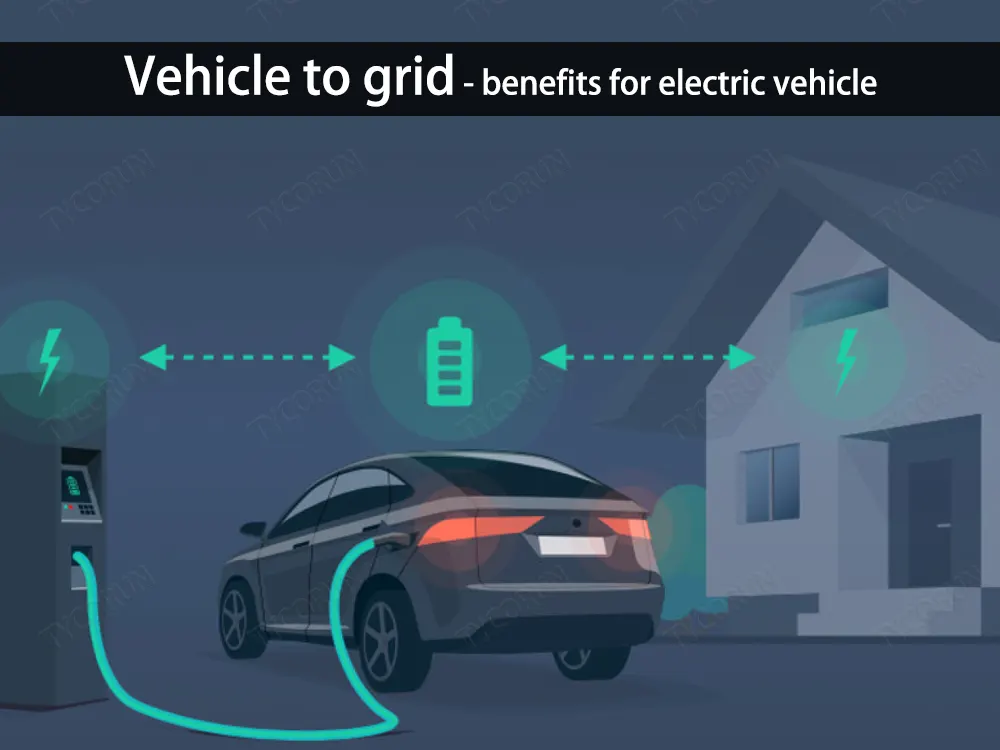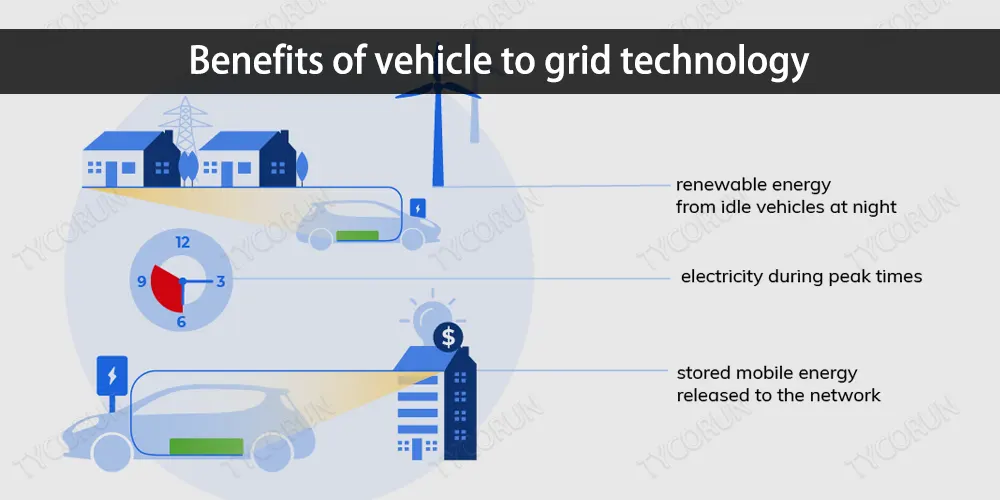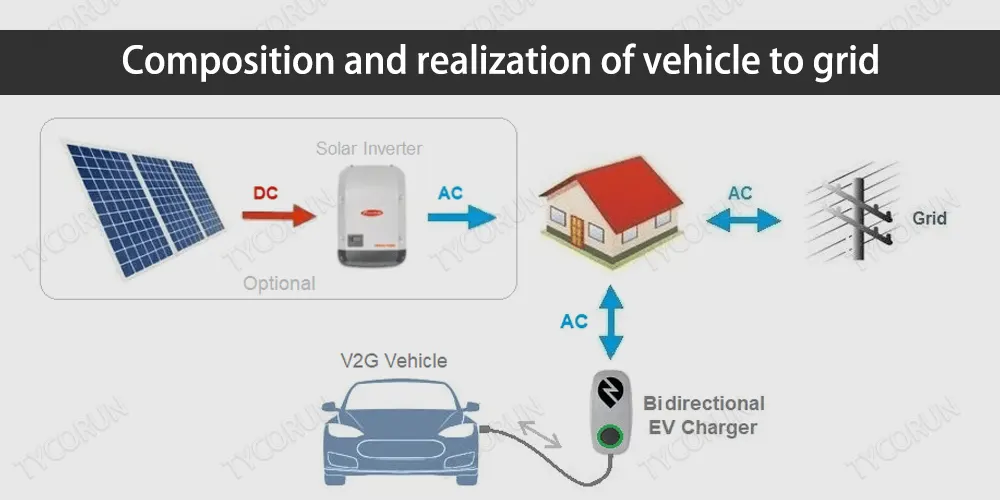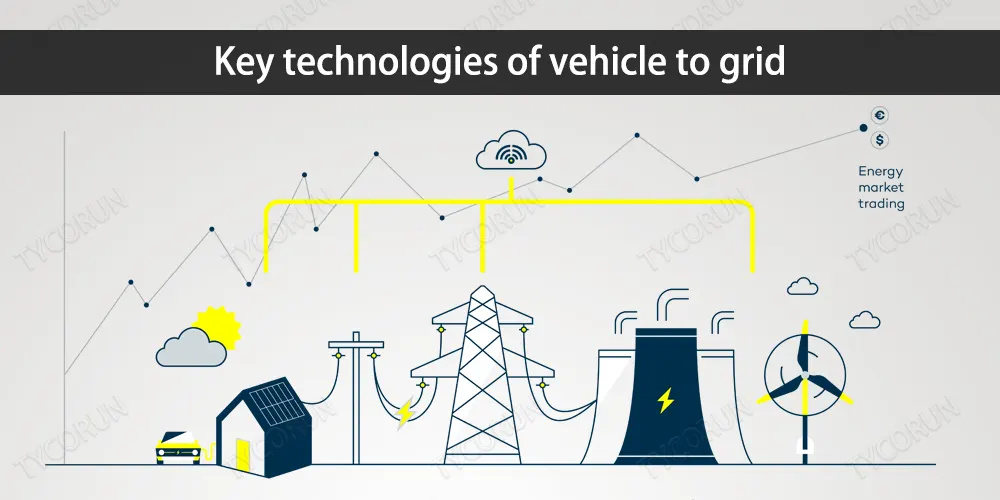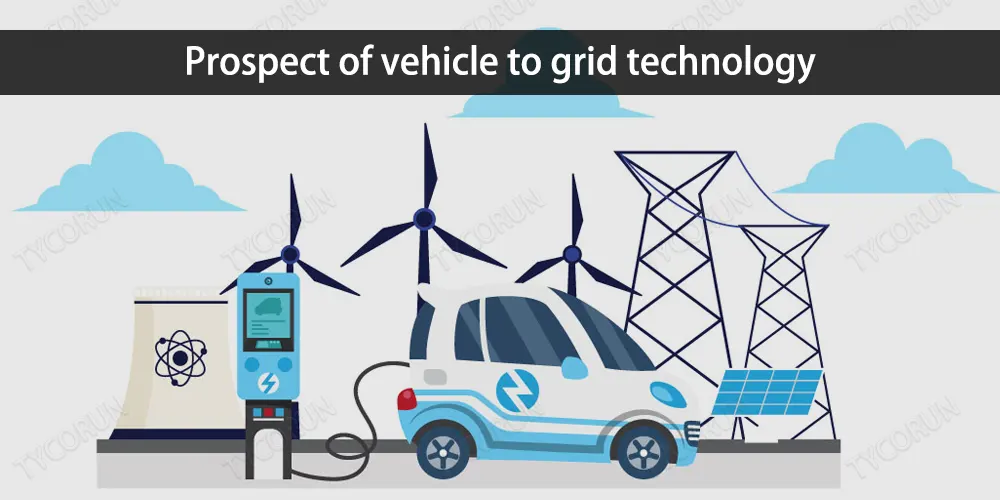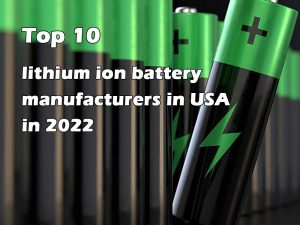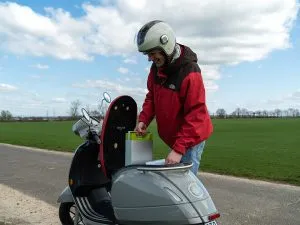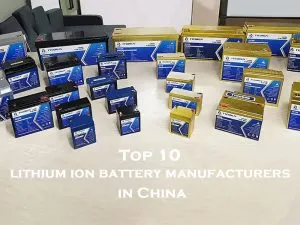Home » lithium ion battery knowledge » Vehicle to grid – benefits for electric vehicle
Vehicle to grid - benefits for electric vehicle
What is vehicle to grid?
Vehicle to grid technology is a technology that uses electric vehicle on-board batteries as distributed energy storage units to realize two-way transmission of energy and information between vehicles and the grid.
The application of vehicle to grid technology can transform disordered charging into ordered charging, and connect electric vehicles to the grid as mobile and distributed energy storage units.
At the same time, the vehicle to grid technology can reduce the reserve capacity of thermal power or other conventional units, improve the stability of power supply, and reduce the investment in grid capacity and equipment transformation.

Benefits of vehicle to grid technology
Under the traditional energy structure, power plants convert primary energy such as coal and water into electrical energy, which is finally delivered to the load end through the transmission and distribution of the large power grid.
With the popularization of electric vehicles, large-scale centralized or distributed access to the grid for charging, the plug-and-play working mode and time rhythm make the “load side” have randomness and volatility.
Unguided electric vehicle charging loads may generate new load peaks and pose challenges to grid operations. The disorderly growth of the load can instantly lower the voltage and frequency of the grid, and reduce the output of active power.
Electric cars have a longer idle time, especially private cars. The vehicle-mounted large-capacity battery can be used as a distributed energy storage device for the power grid, and the excess electric energy can be fed back to the power grid through vehicle to grid technology for use by other users.
When the grid demand peaks, vehicle to grid technology can release the energy stored in the vehicle back to the grid to help balance the grid load. This has changed the basic properties of batteries in electric vehicles, from pure energy storage components to “energy storage + discharge + intelligence” devices.
Similarly, the vehicle to grid energy storage mode can also be used to solve the peak-shaving and valley-filling of grid loads, improve the quality of power supply, and solve the random and intermittent problems of new energy power generation.
Electric vehicles charge from the grid at night when the electricity demand is low and the electricity price is low. During the day, when the electricity demand is high and the electricity price is high, the electricity is fed back to the grid to cut peaks and fill valleys and balance the grid.
Improve power quality, optimize power supply quality such as load following, frequency, voltage and power factor management or correction through electric vehicle energy storage.
Play a buffer role in intermittent renewable energy access to the grid. If there is a strong wind, the excess wind power will be stored in the electric vehicle, and then fed back to the grid during the peak load, thus stabilizing the intermittent wind power.
Electric vehicles can be used as a distributed energy storage system to provide backup power in the event of a sudden power failure, just like UPS lithium battery.
Composition and realization of vehicle to grid
The smart grid provides an application platform for the interaction between electric vehicles and the grid. The components of vehicle to grid mainly include electric vehicles, energy suppliers, grid operators, mobile operators, and users.
At present, the implementation methods of vehicle to grid can be divided into four categories: centralized vehicle to grid implementation methods, autonomous vehicle to grid implementation methods, micro-grid-based vehicle to grid implementation methods, and vehicle to grid implementation methods based on battery pack replacement.
● Centralized vehicle to grid
It refers to the gathering of electric vehicles in a certain area, and the unified deployment of the predetermined power transmission and feeding of the vehicles in the area according to the needs of the power grid. This method adopts unified scheduling and centralized management, which can achieve overall optimization.
● Autonomous vehicle to grid
It means that all electric vehicles are equipped with vehicle-mounted information transmission devices, which can conduct two-way information exchange with the smart grid in real time. The main feature of this method is that it has extremely high flexibility, and each electric vehicle is scattered everywhere as an independent node. Due to the lack of unified management, the charging and discharging of each car has great randomness.
● Vehicle to grid based on swapping battery packs
It is derived from the electric vehicle power supply mode of battery swapping, which is similar to the centralized one, but there are differences in operational behavior.
Different from the centralized integration of vehicles, it focuses more on the concentration of the battery itself. This method is suitable for the power station, which centrally integrates a large number of stored batteries, and enables the batteries to directly participate in the optimal operation of the power grid under appropriate deployment.
● Vehicle to grid based on microgrid
The electric vehicle is connected to the microgrid as a temporary power source, and an appropriate access method can be selected according to the characteristics of the microgrid.
The direct object of this vehicle to grid implementation method is not the large power grid, but the microgrid, which provides support for the distributed power in the microgrid and supplies power to related loads. This method is applicable to both home and business users.
Key technologies of vehicle to grid
The realization of vehicle to grid is a systematic project, which needs to open up technologies and channels in various links such as car owners, vehicle to grid devices, power grids, and information dispatching. Technological breakthroughs are a prerequisite for the development of vehicle to grid.
● Bi-directional charger and associated technology
The premise of the realization of vehicle to grid is the two-way flow of energy. Most of the current charging piles are one-way charging piles, which only have the rectification function of AC-DC but not the inverter function of DC-AC.
● Supply and demand matching forecasting and scheduling technology
In the vehicle to grid mode, new energy electric vehicles have the dual characteristics of “source” and “charge”. However, the number and time of electric vehicles entering and exiting the grid are highly random and cannot be accurately described by a single mathematical model.
● Battery life and management technology
The addition of electric vehicles to the vehicle to grid team will inevitably increase the charging and discharging times of the car battery, which will inevitably affect the battery life.
Affected by many factors, in addition to the battery material itself, the structural design and thermal design of the battery pack, the charge and discharge current during use, temperature, and remaining power all have a great impact.
● Top-level design and standard formulation
As a distributed power source, electric vehicles transmit power to the grid, requiring stricter technical specifications, protection devices, and resource allocation capabilities.
Prospect of vehicle to grid technology
Although there are many challenges at the moment, under the background of dual carbon targets and global energy transformation, the development of vehicle to grid technology is the general trend, and various countries and major companies have begun active exploration.
In 2022, Nanwang Electric Vehicle Co., Ltd. will provide car owners with two products, “vehicle to grid charging” and “orderly charging”, and encourage car owners to participate in car-network interaction.
If you choose “orderly charging”, you can save 0.6 yuan in charging costs per kilowatt-hour; and if you choose “vehicle to grid charging”, you can get 2 yuan in compensation per kilowatt-hour.
For example, taking a new energy vehicle with a battery life of 600 kilometers as an example, it takes about 70 kilowatt-hours of electricity to fully charge it once, and it only costs 42 RMB to fully charge it during valley hours.
Reverse discharge at the peak of the electricity price can get about 140 yuan of electricity price compensation, which means that the electric car can bring 100 yuan to the owner if it does not move in place.
In terms of enterprises, Nissan, Renault, Porsche and other car companies have realized the vehicle to grid two-way charging function; Volkswagen will launch vehicle to grid two-way charging technology for all pure electric models from the group’s MEB platform from 2022, and its Audi, Costa and other brands will also be equipped with it.
Companies such as BYD, one of the top 10 power battery companies in the world, have successively carried out the exploration of vehicle-to-grid technology.
In short, vehicle to grid is still immature. It needs standard constraints between vehicles, piles and networks to open up many links one by one. It also requires more attention and exploration from vehicle companies, operators, and power grid companies.
Based on vehicle to grid technology, the interaction between electric vehicles and the grid can reasonably distribute the load of the grid, and users can also obtain corresponding benefits from participating in grid dispatching services, which reduces the use cost of electric vehicles throughout the life cycle.
In the future, the use of vehicle to grid technology will benefit the development of electric vehicles.


